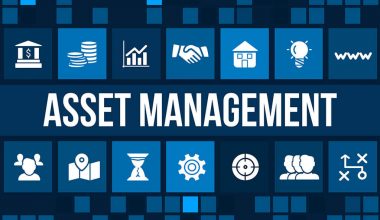The issue of employee turnover has become a major concern for HRM professionals and practitioners. The rate of employee turnover determines whether the organization is moving forward or backward. In the same vein, the different types of employee turnover also determine whether it’s a good turnout or not. That is to say, employee turnover is not entirely a bad outcome. We’ll explain this further, but first, let’s see the meaning of employee turnover and its causes.
Meaning Of Employee Turnover
Employee turnover, also known as employee turnover rate, is the number or proportion of employees who leave a company and are replaced by new employees. While a company’s total number of people who leave is commonly measured, turnover can also refer to subcategories within an organization, such as individual departments or demographic groupings.
Turnover, often known as employee turnover or labor turnover, is the rate at which a company loses employees in the context of human resource management (HRM). It denotes the average length of stay for employees.
Turnover is calculated for both individual businesses and their industries as a whole. When an employer is said to have a high turnover rate in comparison to its competitors, it means that its employees have a shorter average tenure than employees at other companies in the same industry.
High employee turnover may be detrimental to a company’s productivity if skilled professionals are frequently leaving and the working pool has a large percentage of apprentice workers.
Types Of Employee Turnover
Because your talent can slip through your fingers and you want to keep as many high-performing staff as possible, you may think of turnover as a bad idea. This is not always the case, as you might have significant turnover while still keeping your best employees and continuing to perform well.
Turnover can take many different forms. Internal turnover refers to people leaving their present roles and taking new positions within the same company. External turnover refers to individuals leaving their current positions and taking new positions outside of the same organization.
Internal turnover can have both good (such as boosted morale from a change in work and supervisor) and negative (such as project/relationship disruption or the Peter Principle) impacts. As a result, monitoring this type of turnover may be just as crucial as monitoring its external counterpart.
Internal employee turnover can be governed and controlled by standard HRM processes such as an internal recruitment policy or formal succession planning. Internal turnover, also known as internal transfers, is often regarded as an opportunity to assist employees in their career development while limiting more costly external turnover.
Unless the position is a specified stepping-stone role, a large frequency of internal transfers departing a given department or division may indicate issues in that area.
Generally, employee turnover is classified into four types, and we’ll look at each of them:
#1. Voluntary Turnover
This happens when an employee chooses to quit the organization freely. The reasons for this deviation may differ. Everything from a better job offer to a breakdown is possible.
#2. Involuntary Turnover
This occurs when the employee is fired by the employer, usually due to poor performance or force majeure.
#3. Functional Turnover
This refers to employee turnover when the person in issue is a low performer in the organization and can be easily let go.
#4. Dysfunctional Turnover
Employees that had significant leadership potential but departed the organization. These are the worst-case scenarios for turnover, and they are the ones you want to avoid by developing a succession plan.
Desirable and Undesirable Turnover
Turnover has a negative connotation, although it is not always a bad thing.
Desirable turnover happens when an employee whose performance falls short of the company’s expectations is replaced by someone whose performance meets or surpasses those goals.
It is desirable because poor job performance, absenteeism, and tardiness are expensive – replacing a bad performer with an employee who does his job can increase the company’s profitability.
Desirable turnover also occurs when changing staff instills new talent and abilities, providing a competitive edge to the firm.
Unwanted turnover, on the other hand, means losing employees whose performance, talents, and certifications are significant resources.
How Do You Determine Employee Turnover?
Divide the total number of employees who depart in a certain time frame (month, quarter, year, etc.) by the average number of employees who work in that time frame. Multiply that figure by 100 to get the staff turnover rate.
For example, if you have an average of 140 workers working throughout a month and 26 left, your turnover rate is around 18.6 percent.
The equation would look like this: (26/140)*100 = 18.57
Temporary hires and staff on leave are not included in any part of the equation. Incorporating transitory swings in staff numbers will cause your turnover rate to be larger than it is.
Advantages of Employee Turnover
Turnover is expensive. It generates numerous problems for a company. The following are the primary drawbacks:
Turnover comprises a variety of expenses, including replacement and opportunity costs. Both direct and indirect costs exist. Direct costs include living expenses, replacement costs, and transition costs, while indirect costs include productivity losses, reduced performance levels, unneeded overtime, and bad morale.
However, the impact is not only financial; it also has a negative influence on staff morale. Although difficult to quantify, low morale has a domino effect that reduces efficiency and effectiveness.
Another disadvantage is poor workplace performance. Workers with less expertise are less likely to sell higher-value solutions and provide optimum service.
Many of the negative effects of turnover are related to poor performance. Companies with a greater turnover rate may have difficulty completing all necessary or crucial daily duties.
Reasons for High or Low Turnover
HRM personnel in organizations must first understand the primary reasons for employee turnover in order to lower turnover rates. Good people leave weak managers, not good organizations! Good employees leave for a variety of reasons.
The following are some reasons for employee turnover:
#1. Rude Conduct
According to studies, everyday humiliations reduce productivity and cause good employees to leave.
Employee turnover is exacerbated by rudeness, assigning blame, backbiting, favoritism, and retaliation. Feeling bitter and abused is not conducive to a positive work atmosphere.
#2. Work-life conflict
Organizations continue to demand that one person execute the work of two or more people as economic demands increase.
Employees are compelled to choose between their personal and professional lives in such instances. This does not sit well with today’s younger workforce, which is exacerbated when both spouses work.
#3. A misalignment between job expectations
It is all too usual for a position to deviate dramatically from the initial description and promises made during the interviewing period.
When this occurs, it might breed mistrust.
#4. Misalignment of employees
Organizations should never hire personnel (internal or external) unless they are qualified for the job and align with the culture and aims of the organization.
Managers should not attempt to create a fit where none exists. This is equivalent to trying to squeeze a size nine foot into a size eight shoe. Employee turnover is frequently the result of neither management nor employees being happy.
#5. Feeling underappreciated
Everyone desires to be acknowledged and rewarded for a job well done. The reward does not have to be monetary. Sincere appreciation is the most effective form of recognition. When employees are not recognized, their sense of dignity compels them to leave the organization.
#6. Lack of coaching and feedback.
Ineffective managers put off providing feedback to staff, despite knowing instinctively that providing and receiving honest feedback is critical for the growth and development of successful teams and companies.
This could result in employee churn.
#7. Poor decision-making skills
Micromanagers appear to be insecure about their employee’s capacity to do their tasks without constant supervision. Employee ownership and empowerment are essential in organizations!
Employees who are empowered have the authority to make ideas and decisions. Employees may attempt to resign if they lack decision-making skills.
#8. Lack of people skills
Many managers were promoted because they performed effectively and produced results. However, this does not imply that they are capable of leading. Leaders are created rather than born.
People skills can be learned and improved, but it is preferable if a manager has a natural capacity to connect with and motivate others. Otherwise, they aim to avoid leading.
#9. Organizational Instability
Employees are disconnected from the organization’s goal because management is constantly reorganizing, changing directions, and shifting people around.
Employees have no idea what is going on, what their priorities are, or what they should be doing. This produces irritation, which leads to misunderstanding and inefficiencies, and, eventually, turnover.
#10. Halt in raises and promotions
Raises and promotions are frequently halted for economic reasons, but they are reluctant to return once the crisis has passed.
Organizations may not set out to provide the greatest salary in their field. Even if they don’t, companies must provide competitive wages and benefits while making their employees feel valued! This is an important combo.
Ways to Reduce or Prevent Employee Turnover
Employees are essential in running a business; without them, the company would fail. However, today’s businesses are discovering that employees do not stay in the same firm for long periods of time.
Companies that hire the most brilliant individuals should optimize the return on their investment in each employee.
They should take the time to listen to their employees’ problems and make them feel included, since this will foster loyalty, lowering attrition, and allow for growth.
Here are some suggestions for lowering employee turnover:
- Candidates should be extensively interviewed to verify that they have the necessary abilities and that they will fit in with the corporate culture, supervisors, and coworkers.
- Encourage employee inventiveness through benefits, flexible work schedules, and bonus schemes as needed.
- Recognition and praise are low-cost techniques to keep employees happy and productive.
Other methods of reducing turnover include:
- Hiring the right people from the beginning
- Choosing the appropriate remuneration and perks.
- Paying attention to the personal requirements of employees and providing additional freedom
- Ensure that your best personnel are personally devoted to the organization’s aims.
- Ensuring that skilled people believe they are playing a meaningful part in achieving those goals.
- Recognizing and praising employees may be the most cost-effective approach to keeping them happy and productive.
- Creating a fulfilling workplace.
Examine Your Employee Turnover Rate.
To gain a better understanding of your employee turnover rate, simply answer three questions:
#1. “Who are the departing employees?”
Even if your turnover rate is lower than the industry average, there’s no reason to cheer until you know who is leaving you. If your top performers are leaving, you must respond quickly or your company’s performance may suffer. On the other hand, if your low performers are departing, you may benefit from increased employee engagement, productivity, and revenues.
#2. “When are they going to leave?”
Keeping note of when individuals leave can be really beneficial. For example, your new recruit turnover rate might provide a wealth of information. For starters, it can inform you whether your recruitment strategies are effective. If a substantial number of your new employees quit because their job obligations were different or more challenging than what they expected, you may want to reconsider your job descriptions. Investing additional time and money in developing your orientation process may also be beneficial if employees leave due to cultural mismatches. If your employees struggle with work-life balance, you might also consider offering alternative employee engagement programs such as parental leave or flexible working hours.
#3. “Why are they leaving?”
When you understand why your employees depart, you can adjust your company’s management style or rules accordingly. Exit interviews are a good approach to see if others have similar reasons for leaving or if they have helpful suggestions for how you may better. Employees, for example, frequently state that they opted to retire because their contributions and efforts were not valued. If you hear statements like this in departure interviews or performance assessments, HR should engage with managers to change performance rating systems.
What Is A Good Employee Turnover?
A good employee turnover rate allows your company to run smoothly and provides more possibilities than difficulties.
Who Is Responsible For Employee Turnover?
The HRM supervisor is generally responsible for employee turnover
What is a normal employee turnover rate?
The normal turnover rate varies depending on the industry, however, it’s usually between 15-20%.
How does employee turnover affect an organization’s bottom line?
High employee turnover can lead to increased costs associated with recruiting, hiring, and training new employees, and decreased productivity and performance, which can negatively impact an organization’s bottom line.
How to measure employee turnover rate?
The turnover rate can be measured by the number of employees who leave within a certain period of time, such as monthly or annually, divided by the average number of employees during that period.
Can employee turnover be beneficial for an organization?
Although high turnover can be detrimental, low turnover can lead to cost savings by reducing the expenses associated with recruiting, hiring, and training new employees, increasing productivity and performance, and improving employee morale and engagement.
Can employee turnover vary by industry or sector?
Yes, it can vary depending on the industry, with some industries having higher turnover rates than others.
How to minimize employee turnover in a remote work environment?
Some strategies include fostering a sense of community and connection, clearly communicating expectations and guidelines, and providing the necessary tools and resources for employees to be successful.
In Conclusion,
Understanding the factors that contribute to employee turnover can assist HRM firms in making the required changes to keep their workforce at the optimal level. Because of the numerous variables influencing turnover, acceptable or optimum turnover criteria differ. Organizations must consider individual and industry-related aspects while determining their target turnover rate, researching the causes of voluntary and involuntary turnover, and making changes to affect the employee turnover rate for their own workforce.
FAQs On Employee Turnover
What causes employee turnover?
Problems with the company’s culture, perks and compensation structure, career path and training, supervisors, and other factors are among the causes of employee turnover.
Why is it important to reduce employee turnover?
Experts estimate that it can cost twice an employee’s pay to find, hire, and train a successor. Turnover can also harm morale among your remaining staff, reduce productivity, and make it more difficult to find fresh talent. Hence, the need to reduce employee turnover.
What is the difference between turnover and attrition?
The main distinction between the two is that when an employee leaves, the organization looks for a replacement. However, in the event of attrition, the employer either leaves the gap unfilled or terminates the job role.
Related Articles
- Financial Performance: A Comprehensive Guide For Any Business(+ quick tools)
- 5 Most Effective Ways To Reduce Employee Turnover
- Average Collection Period (ACP): Formula, Calculations & Importance
- Accounts Receivable: Examples, Process, Formula & Free Tips
- How To Calculate Average Inventory- A complete Step-by-Step Guide






